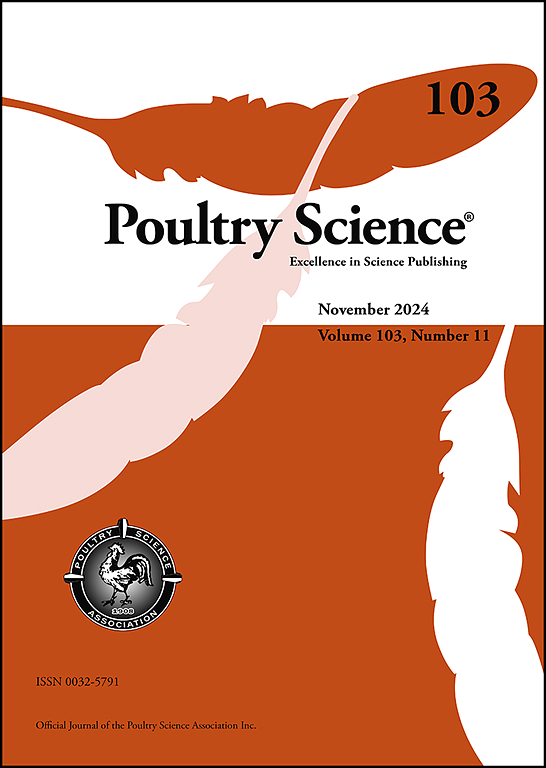Drying methods affected the fatty acids oxidation and bacterial community of traditional dry-cured ducks during processing and its relation with the aroma formation
IF 3.8
1区 农林科学
Q1 AGRICULTURE, DAIRY & ANIMAL SCIENCE
引用次数: 0
Abstract
The formation of volatile compounds in dry-cured ducks produced by hot and cold air circular drying (HCAD), hot air drying (HAD), and traditional sun drying (TSD) were analyzed by E-nose and GC-MS. The HCAD exhibited higher alcohols, aldehydes, esters, and furans than that of the other two. Six, five, and three key compounds were identified by OAV in HCAD, HAD, and TSD, respectively. Nonanal was the highest relative content of aldehydes in all groups. (E)-2-octenal was detected only in HCAD. HAD accelerated the oxidation of fatty acids. The POV and AV of HAD were 0.24 g/100 g and 2.02 mg/g when stored for 15 days, which were higher than that of HCAD and TSD. Proteobacteria, Actinobacteriota and Firmicutes were the most abundant phylum, Psychrobacter, Kocuria, and Macrococcus were the primary dominant genus. The hightest abundance of Firmicutes and Macrococcus in the HCAD-15d might contribute to the aroma formation. HCAD showed a better quality and flavor than TSD and HAD, indicating it is an innovative method for producing dry-cured duck.

干燥方式对传统干腌鸭加工过程中脂肪酸氧化和细菌群落的影响及其与香气形成的关系
采用电子鼻和气相色谱-质谱分析了冷热循环干燥(HCAD)、热风干燥(HAD)和传统晒干(TSD)三种干燥方式的干腌鸭挥发物的形成情况。HCAD的醇类、醛类、酯类和呋喃类含量高于其他两种。OAV在HCAD、HAD和TSD中分别鉴定出6个、5个和3个关键化合物。壬醛在各组中相对含量最高。(E)-2-辛醛仅在HCAD中检测到。HAD加速了脂肪酸的氧化。贮藏15 d时,HAD的POV和AV分别为0.24 g/100 g和2.02 mg/g,高于HCAD和TSD。变形菌门、放线菌门和厚壁菌门是最丰富的门,冷杆菌门、高菌门和巨球菌是主要优势属。HCAD-15d中厚壁菌门和巨球菌的丰度最高可能与香气的形成有关。HCAD的品质和风味优于TSD和HAD,是一种创新的干腌鸭生产方法。
本文章由计算机程序翻译,如有差异,请以英文原文为准。
求助全文
约1分钟内获得全文
求助全文
来源期刊

Poultry Science
农林科学-奶制品与动物科学
CiteScore
7.60
自引率
15.90%
发文量
0
审稿时长
94 days
期刊介绍:
First self-published in 1921, Poultry Science is an internationally renowned monthly journal, known as the authoritative source for a broad range of poultry information and high-caliber research. The journal plays a pivotal role in the dissemination of preeminent poultry-related knowledge across all disciplines. As of January 2020, Poultry Science will become an Open Access journal with no subscription charges, meaning authors who publish here can make their research immediately, permanently, and freely accessible worldwide while retaining copyright to their work. Papers submitted for publication after October 1, 2019 will be published as Open Access papers.
An international journal, Poultry Science publishes original papers, research notes, symposium papers, and reviews of basic science as applied to poultry. This authoritative source of poultry information is consistently ranked by ISI Impact Factor as one of the top 10 agriculture, dairy and animal science journals to deliver high-caliber research. Currently it is the highest-ranked (by Impact Factor and Eigenfactor) journal dedicated to publishing poultry research. Subject areas include breeding, genetics, education, production, management, environment, health, behavior, welfare, immunology, molecular biology, metabolism, nutrition, physiology, reproduction, processing, and products.
 求助内容:
求助内容: 应助结果提醒方式:
应助结果提醒方式:


